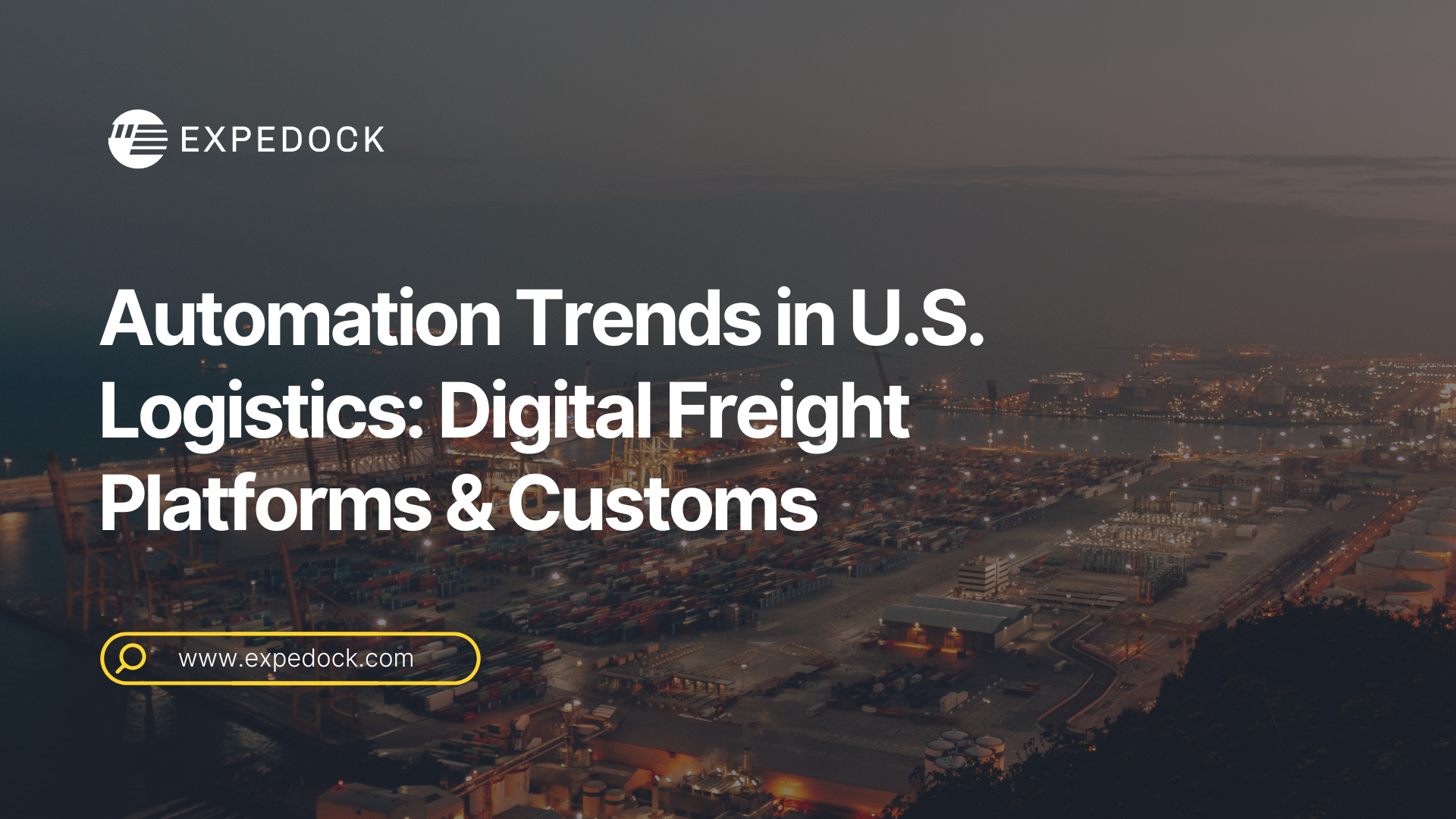NEW RELEASE: Expedock Launches FREIGHT AI AGENTS - FREYA & AI OUTLOOK AUTOMATION

Over the past five years, the U.S. logistics industry has undergone a remarkable digital transformation. Traditional freight forwarding, once reliant on phone calls, paperwork, and manual processes, is increasingly driven by data, automation, and AI-powered platforms. For freight forwarders involved in international import/export, this shift offers exciting opportunities to streamline operations, cut costs, and boost transparency.
According to recent forecasts, the digital freight forwarding market in North America is expected to surpass $42 billion by 2025. Startups and tech giants alike are investing heavily to build smarter freight marketplaces and customs automation tools. Companies such as Uber Freight, Flexport, and Convoy have pioneered innovations that are reshaping how freight moves across the country and borders.
At the heart of this transformation are digital freight marketplaces, online platforms where shippers and carriers instantly connect. Instead of hours of phone tag and back-and-forth quoting, these marketplaces offer real-time pricing, booking, and shipment tracking.
Take Uber Freight, for example. Originally a small startup, Uber Freight now operates a vast digital brokerage powered by machine learning algorithms that match loads with trucks and optimize routes. According to a 2025 report from MIT’s Center for Transportation and Logistics, Uber Freight’s route optimization AI has reduced empty miles (trucks driving without cargo) by 10–15%. This cut not only saves fuel but also reduces operational costs, making freight cheaper and deliveries faster.
Flexport, another leader in this space, brands itself as a “digital forwarder.” Led by former Amazon executive Dave Clark, Flexport builds end-to-end visibility and automation tools for global logistics. In 2023, Flexport unveiled over 20 AI-powered features, including a natural-language shipment tracking tool and a “control tower” dashboard that gives users live insights into their supply chain. Flexport’s founder Ryan Petersen believes automating routine tasks will lead to faster growth and new types of jobs focused on technology and customer support.
Seattle-based Convoy, acquired by Flexport in 2023, pioneered automated pricing models capable of handling 98–99% of loads without manual negotiation. Over five years, Convoy cut its cost-per-load by around 40% through automation, enabling more competitive bids and higher margins. While no longer independent, Convoy’s tech legacy lives on within Flexport’s broader platform.
For freight forwarders, these innovations translate into real benefits. Automated systems streamline quoting, booking, and paperwork, cutting days off shipment processing cycles. Instead of faxing customs forms or manually entering data, forwarders now rely on transport management systems (TMS) that auto-populate forms and provide unified visibility across trucks, ocean vessels, and air cargo.
Uber Freight’s platform, for instance, lets forwarders tap into a carrier network of over 100,000 trucks nationwide through its Exchange marketplace. This democratizes access to capacity, allowing smaller carriers to bid on loads and forwarders to secure freight faster without cold calls or manual searches.
The savings from smarter routing and AI-driven pricing add up. Reducing empty miles by 10–15% directly lowers fuel consumption and driver hours, while automating 98% of pricing reduces administrative overhead. In practical terms, this means more competitive bids and better margins for forwarders.
Greater transparency is another big plus. Customers increasingly demand real-time tracking and updates. Modern platforms offer “control tower” dashboards that aggregate data from IoT sensors, GPS trackers, and customs feeds to provide live status on shipments, customs clearance, and delivery schedules. This visibility reduces customer inquiries and builds trust between forwarders and their clients.
Finally, digital tools help freight forwarders scale efficiently. Automation handles repetitive tasks, freeing staff to focus on exceptions and customer service. Flexport sees this shift as a net job creator, enabling companies to handle more volume without linearly increasing headcount.
Customs clearance has long been a major bottleneck in global logistics. According to industry surveys, about 88% of shippers report delays due to customs procedures. The U.S. Customs and Border Protection (CBP) runs the Automated Commercial Environment (ACE) system, which allows brokers to submit import/export data electronically and acts as a “Single Window” for customs processing.
While ACE provides the infrastructure, private-sector tools are filling the gaps with AI-driven compliance and classification solutions. These tools use machine learning to auto-classify goods under the Harmonized System, flag risk factors, and auto-fill customs entries based on historical data. Estimates suggest AI can automate up to 80% of repetitive customs tasks, reducing errors and speeding approvals.
One innovative example is Global Inspections Group’s “Digital Compliance Officer,” an AI platform that analyzes export documentation and sensor data before cargo reaches the U.S. This early screening helps identify non-compliant or high-risk shipments, allowing forwarders and customs officials to focus resources on genuine risks and speed the release of compliant goods.
Other platforms like AiDock and KlearNow leverage optical character recognition (OCR) and AI to transform invoices, bills of lading, and certificates into structured digital data. These platforms automate manual paperwork, reduce errors, and provide forwarders with control tower dashboards to monitor customs clearance status in real time.
Together, these technologies help forwarders manage complex import/export compliance faster and with fewer headaches.
Here’s what automation means in practice for freight forwarders in U.S. international trade:
Kickstart your automation journey with Expedock. Book a free consultation today.
Let us help you optimize business processes and deliver unrivaled customer experience to your clients.